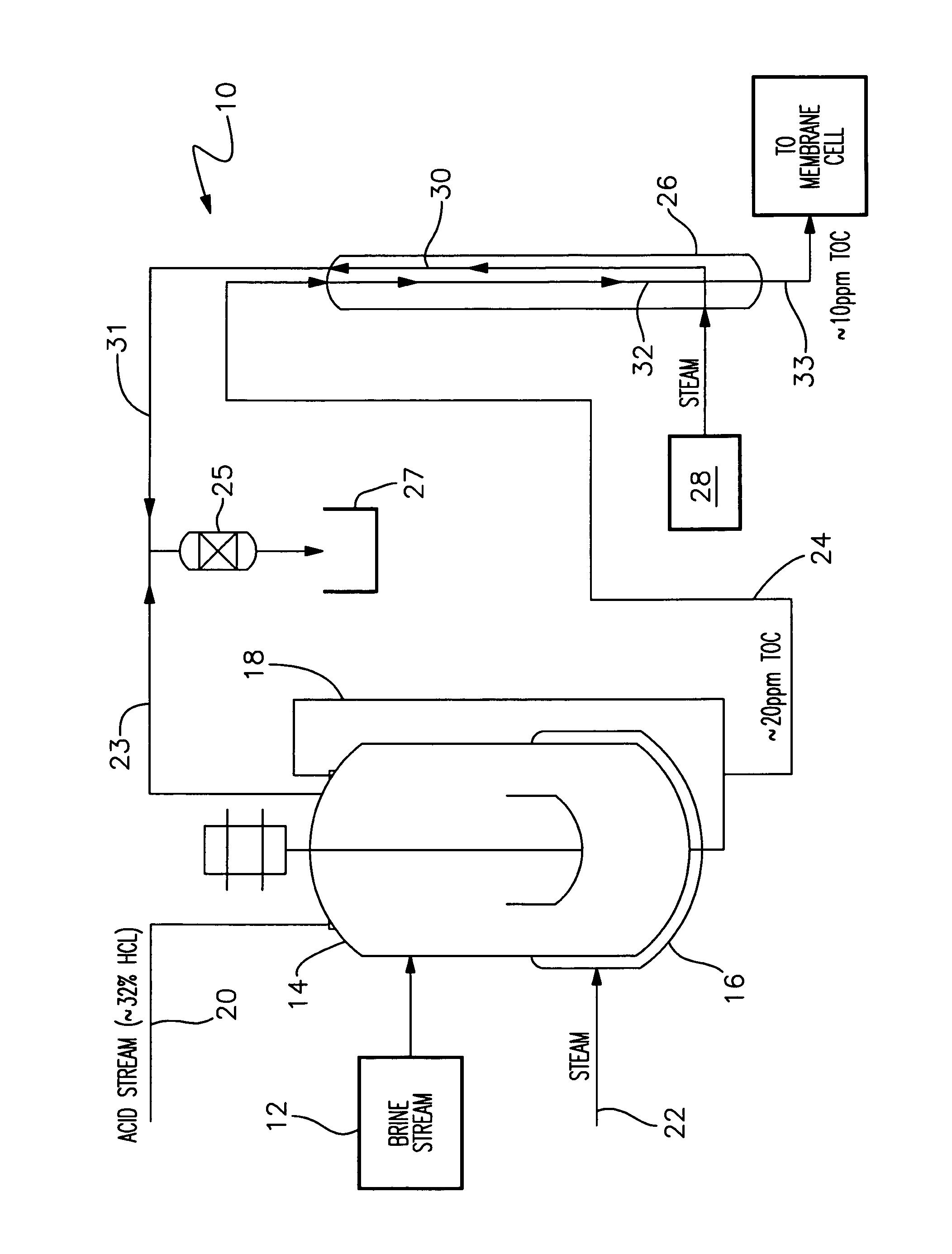System and process for removing total organic carbons from a brine waste stream
a technology brine waste, which is applied in the direction of sustainable manufacturing/processing, multi-stage water/sewage treatment, separation processes, etc., can solve the problems of ineffective chloropicrin production methods, wasteful and unduly expensive, and failure to recover nacl from brine, so as to achieve efficient removal of total organic carbons
- Summary
- Abstract
- Description
- Claims
- Application Information
AI Technical Summary
Benefits of technology
Problems solved by technology
Method used
Image
Examples
Embodiment Construction
[0013]Other objects, features and advantages will occur from the following description of a preferred embodiment and the accompanying drawing, in which:
[0014]FIG. 1 is a schematic view of a system and process for removing TOC's from a brine waste stream in accordance with this invention.
[0015]There is shown in FIG. 1 a system 10 for removing total organic carbons (TOC's) from a brine waste stream of the type normally produced during the manufacture of a chemical such as chloropicrin. It should be understood that the present invention is particularly effective for treating brine waste generated during the chloropicrin production process. However, the system and process of this invention may also be used effectively for recovering sodium chloride from other types of brine solutions and waste streams. A brine waste stream produced during the manufacture of chloropicrin typically features a sodium chloride (NaCl) concentration of approximately of 23% wt / wt. This product typically featur...
PUM
| Property | Measurement | Unit |
|---|---|---|
| temperature | aaaaa | aaaaa |
| temperature | aaaaa | aaaaa |
| pH | aaaaa | aaaaa |
Abstract
Description
Claims
Application Information
 Login to View More
Login to View More - Generate Ideas
- Intellectual Property
- Life Sciences
- Materials
- Tech Scout
- Unparalleled Data Quality
- Higher Quality Content
- 60% Fewer Hallucinations
Browse by: Latest US Patents, China's latest patents, Technical Efficacy Thesaurus, Application Domain, Technology Topic, Popular Technical Reports.
© 2025 PatSnap. All rights reserved.Legal|Privacy policy|Modern Slavery Act Transparency Statement|Sitemap|About US| Contact US: help@patsnap.com


